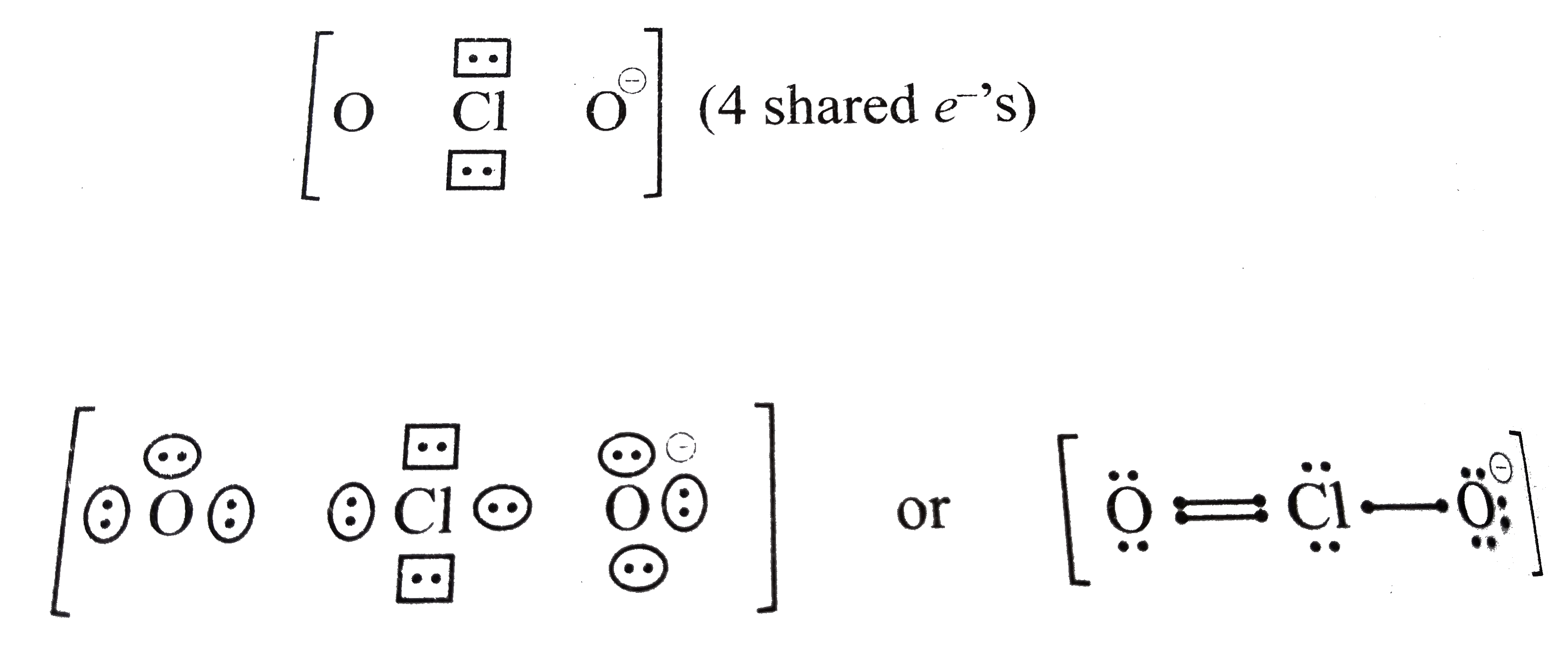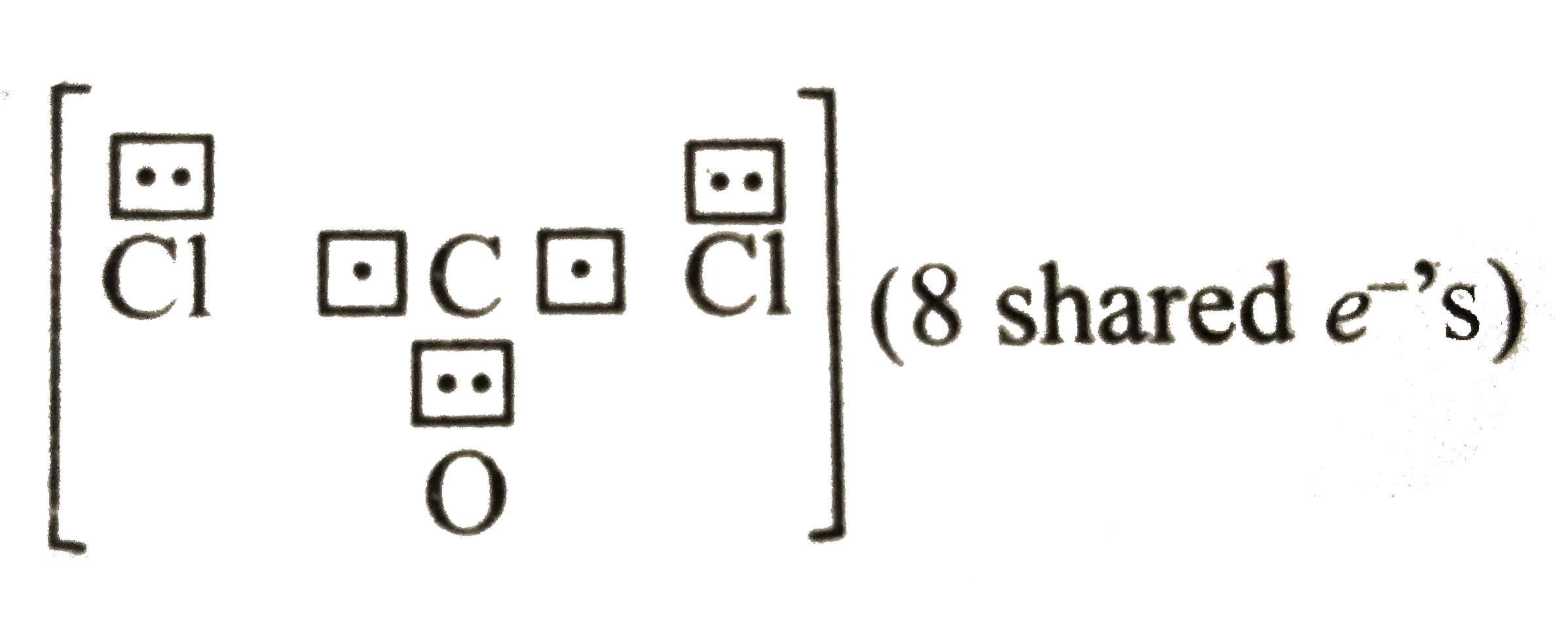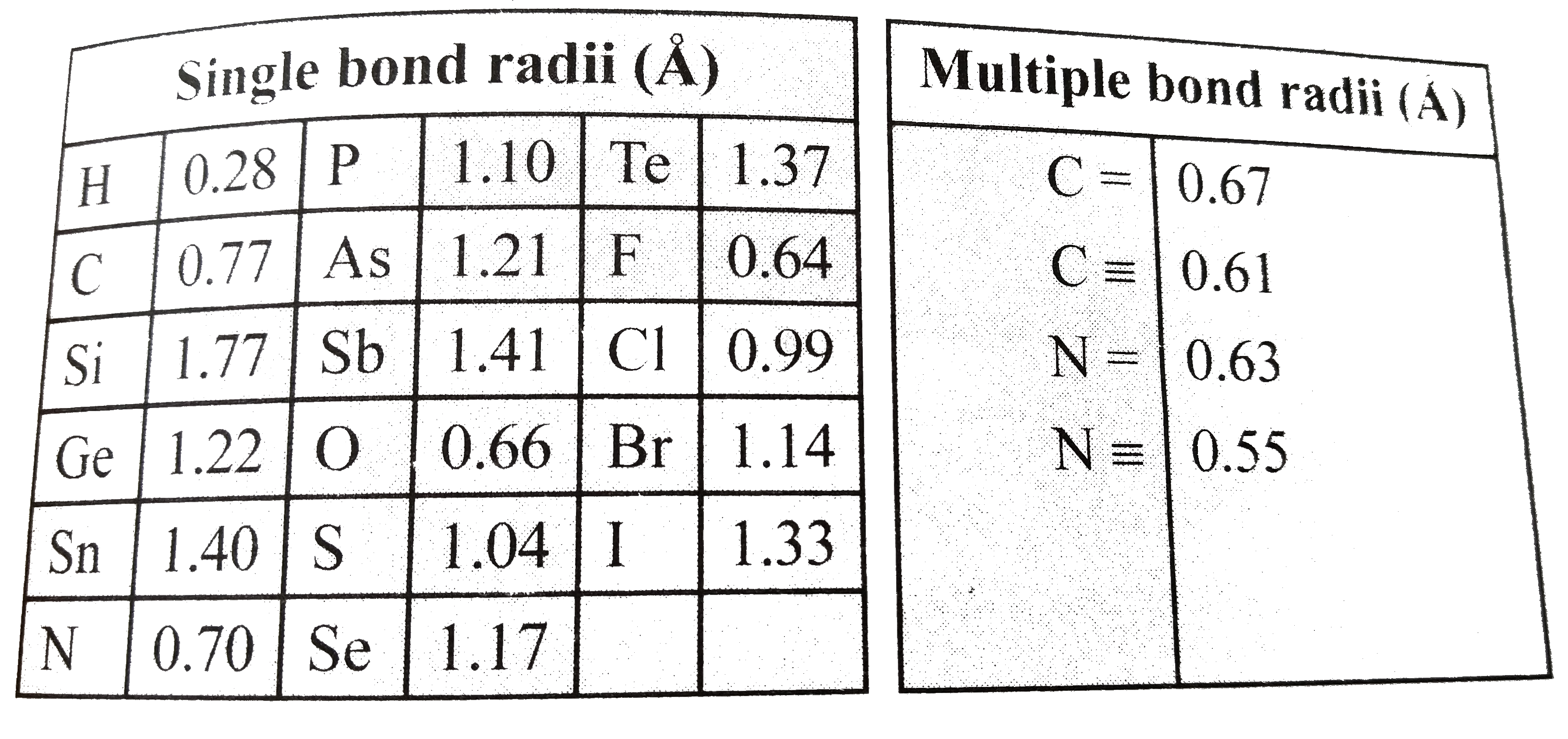Write electron dot and line structure for
(a) SeO2−3 ,(b) Li3PO4 ( c ) ClOΘ2 (d) COCl2
(e) H2CO
(f) C2H2 (g) HCO2H .
(i) V (Total number of valence e−'s) =6+3×6+2=26e−'s
(ii) O (Total number of e−'s for octet) =8+3×8=32e−'s
(iii) S (Shared e−'s)=(O−V)=(32−26)=6e−'s
(iv) Skeletal structure with 6 shared e−'s
(v) U (unshared e−'s)=(V−S)=(26−6)=20e−'s
(vi) Add 20 unshared e−'s to complete the Lewis dot structure
(b) (i) V=5+4×6+3=32e−'s
(ii) O=8+4×8=40e−'s
(iii) S=(O−V)=(40−32)=8e−'s
(iv) Skeletal structure with 8 shared e−'s
(v) U=(V=S)=(32−8)=24e−'s
(vi) Add 24 e−'s to complete the Lewis dot structure
(c ) CIOΘ2
(i) V=7+2×6+1=20e−'s
(ii) O=8+2×8=24e−'s
(iii) S=(O−V)=(24−20)=4e−'s
(iv) Skeletal structure with 4 shared e−'s
(v) U=(V−S)=(20−4)=16e−'s
(vi) Add 16e−'s to complete the Lewis dot structure
(d) COCI2
(i) V=4+6+2×7=24e−'s
(ii) O=8+8+2×8=32e−'s
(iii) S=(O−V)=(32−24)=8e−'s
(iv) Skeletal structure with 8 shared e−'s
(v) U=(V−S)=(24−8)=16e−'s
(vi) Add 16e−'s to complete the Lewis dot structure
(e) H2CO
(i)V=1×2+4+6=12e−'s
(ii) O=2×2+8+8=20e−'s
(iii) S=(O−V)=(20−12)=8e−'s
(iv) Skeletal structure with 8 shared e−'s
(v) U=(V−S)=(12−8)=4e−'s
(vi) Add 4e−'s to complete the Lewis dot structure
(f) C2H2
(i) V=2×4+1×2=10e−'s
(ii) O=2×8+2×2=20e−'s
(iii) S=(O−V)=(20−10)=10e−'s
(iv) Skeletal structure with 10 shared e−'s(v)U=(V−S)=(10−10)= Zero
(vi) Hence skeletal structure is the Lewis dot structure
(g) HCO2H
(i) V=1+4+2×6+1=18e−'s
(ii) O=2+8+2×8+2=28e−'s
(iii) S=(O−V)=(28−18)=10e−'s
(iv) Skeletal structure with 10 shared e−'s
U=(V−S)=(18−10)=8e−'s
(vi) Add 8e−'s to complete the Lewis dot structure









Topper's Solved these Questions
- CHEMICAL BONDING AND MOLECULAR STRUCTUREBOOK - CENGAGE CHEMISTRY ENGLISHCHAPTER - CHEMICAL BONDING AND MOLECULAR STRUCTUREEXERCISE - Ex 2 .2 Subjective (Intermolecular Forces And H-Bonding)
7 Videos
- CHEMICAL BONDING AND MOLECULAR STRUCTUREBOOK - CENGAGE CHEMISTRY ENGLISHCHAPTER - CHEMICAL BONDING AND MOLECULAR STRUCTUREEXERCISE - Ex 2 .2 Subjective (Molecular Orbital Theory)
4 Videos
- CHEMICAL BONDING AND MOLECULAR STRUCTUREBOOK - CENGAGE CHEMISTRY ENGLISHCHAPTER - CHEMICAL BONDING AND MOLECULAR STRUCTUREEXERCISE - Archives Subjective
15 Videos
- ATOMIC STRUCTUREBOOK - CENGAGE CHEMISTRY ENGLISHCHAPTER - ATOMIC STRUCTUREEXERCISE - Concept Applicationexercise(4.3)
19 Videos
- CHEMICAL EQUILIBRIUMBOOK - CENGAGE CHEMISTRY ENGLISHCHAPTER - CHEMICAL EQUILIBRIUMEXERCISE - Subjective type
1 Videos
Similar Questions
Draw electron dot structures of (i) NH3 (ii) PCl5 (iii) C2H2.
View SolutionClassify the following into electrophilies and nucleophiles:
(a) H+ , (b) NH3
(c) AlCl3 , (d) NO+2
(e) CN− , (f) H2O
(g) ROH , (h) H2O
(i) Carbocation.
View SolutionWrite the conjugate bases for the following Brddotonsted acids
(a) HF (b) H2SO4 (c) HCOΘ3
View SolutionWrite the conjugate bases for the following Brddotonsted acids
(a) HF (b) H2SO4 (c) HCOΘ3
View SolutionWrite the conjugate bases for the following Bronsted acids
(a) HF (b) H2SO4 (c) HCOΘ3
View SolutionThe single and multiple bond radii of some elements given in the following table Calculate the bond lengths in
(a) SCI2
(b) NH3
(c ) CH2CI2
(d) HOCI
(e) HCN
(f )H3PO4
(g) CH3NH2
 .
.
View SolutionDraw structure H2PO−3
View SolutionBaCO3⏐↓+CO2+H2O→Ba(HCO3)2
View SolutionBaCO3⏐↓+CO2+H2O→Ba(HCO3)2
View SolutionBaCO3⏐↓+CO2+H2O→Ba(HCO3)2
View Solution
